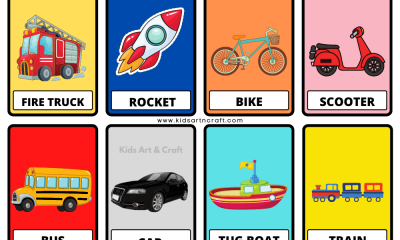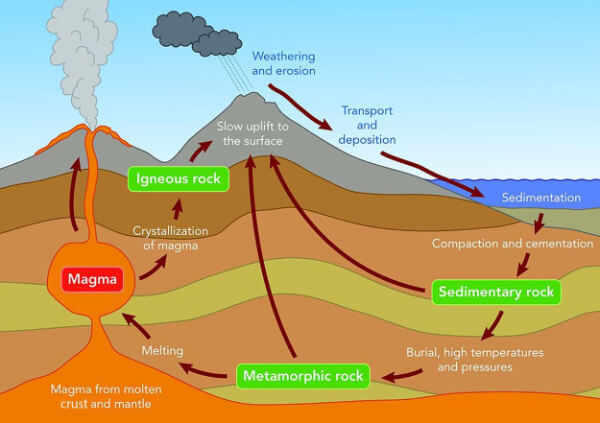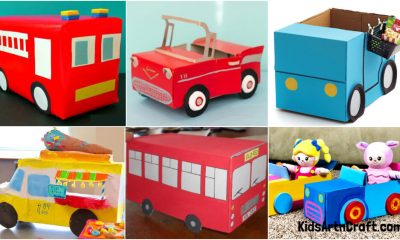DIY and Crafts
Science Projects for Grade 2

If you want your child to explore science, technology, engineering, and math (STEM). A science project is the best method to make small toddlers learn science in a fun way. Second-grade science projects are written and tested by scientists that, it is safe and specifically created for the students of second grade. These projects help students to explore the wonders of science and nature.
These simple science projects don’t require any specific chemicals or solutions, they can easily be executed under the guidance of parents or teachers. Through these projects, second-grade students gain a deeper understanding of the earth its properties of matter, science, and even a whole lot more. Science projects enhance the knowledge of students and help them to understand the working of things more clearly.
Here is a list of some of the very cool science projects which are simple yet interesting and can be executed at home easily. So this summer holiday let’s find out the hidden scientist inside your child, so what are you waiting for? Take your lab coat and try out these amazing science project ideas. GO Go little scientists!!!
Science Projects For Grade 2
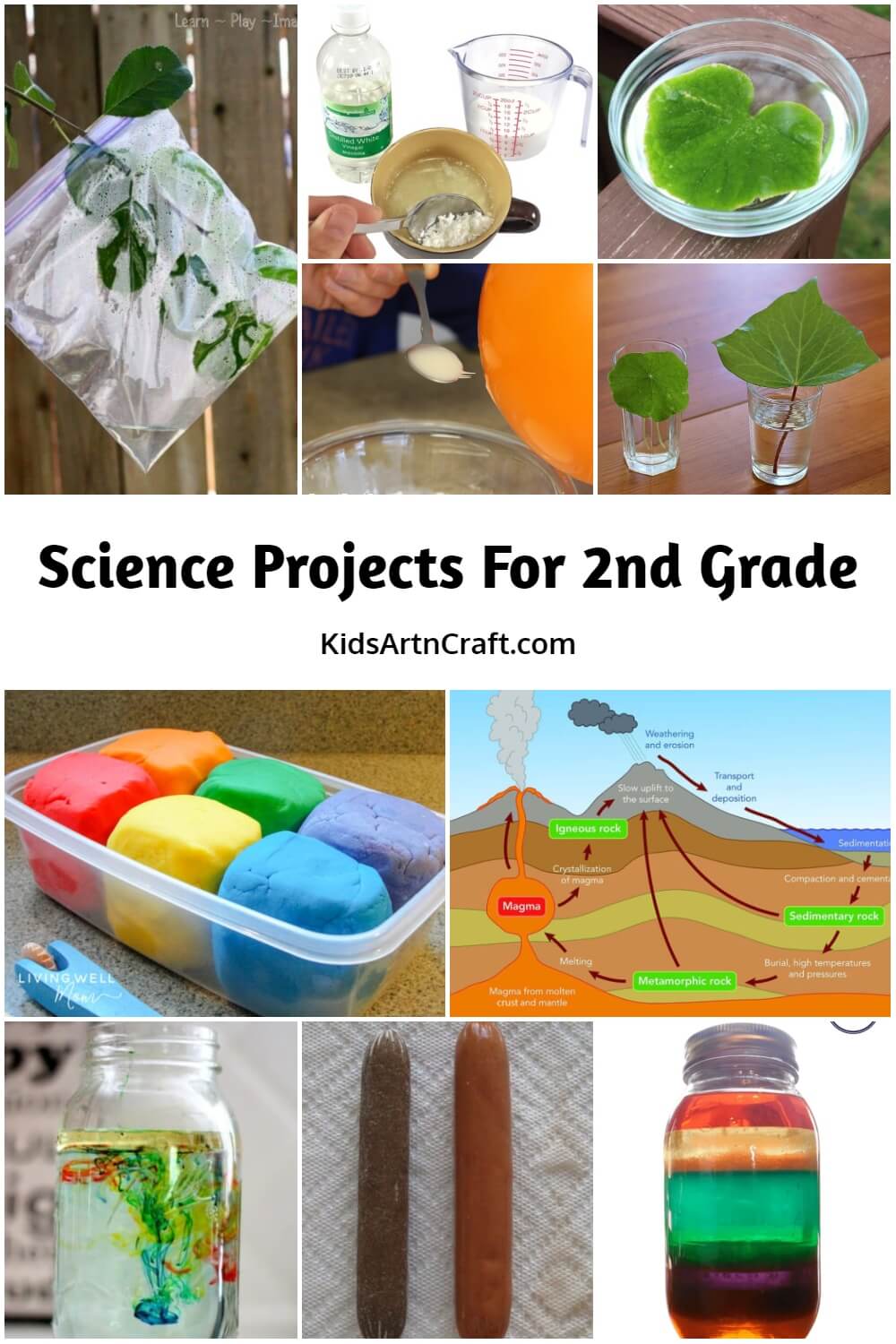
Read More: 10 Simple Science Experiments for 3-5-Year-Olds
Gummy Bear Science Experiments Projects For 2nd Grade

Image Source/Tutorial: Love To Know
This gummy bear activity is a great aid to teach the children about the principles of osmosis. Teaching scientific concepts to young kids is made easier by conducting practical experiments to prove the facts and concepts. Teaching beyond books is the perfect title for this activity. Gummy bears are made with gelatin and hence when put in water don’t dissolve, but become bigger due to osmosis. Kids will enjoy doing this activity a lot.
Model Steam Engine Science Project For Kids

Image Source/Tutorial: Steam Sciproj
Teaching kids about steam engines via books and theory can be a daunting task. Here, we present to you a fun craft activity based on the concepts of steam engines. A steam engine is modeled using plastic bottles and straws. The steam engine works on the concept of water being heated to form steam that rotates the turbines to move the wheels.
Digging Up Fossils & Bones Science Project For 2nd Grade
Fossils and bones are an important part and parcel of archaeological sites. This is a fun activity to teach the school kids about the science of fossils and how fossils are found imprinted on stones. They will learn about how excavation is done to find out about the history of any place and how fossils are identified and studied to know about the future.
How Does a Leaf Get Water Science Project

Image Source/Tutorial: Bloglovin
This is a simple activity to intrigue the curious minds of young kids. With the help of this activity, they will learn that even plants require water for their growth. The leaves of the plants use water along with sunlight and chlorophyll to do photosynthesis. For this activity, take a ziplock bag and secure the leaves tightly. After about a week you will observe water in the ziplock bag as the plants transpire and so the water will be collected in the bag due to the process of transpiration.
Jumping Goop Power of Static Electricity

Image Source/Tutorial: Frugal Fun For Boys
This jumping goop activity is a fun science activity to display the power of static electricity. It will help the teachers to introduce the kids to the topics of electricity and charges in a fun and entertaining way. The balloon gets electrically charged when rub on hair. When you bring a spoon full of cornstarch goop near the ballon the charges on the ballon will attract the goop towards it. If the balloon is sufficiently charged the goop will jump from the spoon towards the balloon!
Read More: 1st Grade Science Projects for School
How Water Travels Through Leaves Simple Science Activities For 2nd Grade

Image Source/Tutorial: Buggy and Buddy
The water in plants flows from the roots up to the leaves through xylem tubes that are running all through the plant body. Leaves with the stem are dipped in a glass of water. A red-colored pigment is added to the water to make it a dark shade of red color. As the days pass by, you will be able to observe the red pigment flowing through the xylem tubes of the leaf.
Rocks: Test, Identify Properties & Classify Geology Experiment
This activity involves the kids identifying various rocks and classifying them into different categories like igneous, sedimentary, or metamorphic based on their color, luster, and hardness. Our Earth’s crust is made up of many layers of rocks. Each layer has different properties. Civil engineers and builders use this knowledge of rocks to build tunnels, roads, dams, and bridges.
How to Make Your Own Eggshell Chalk Chemistry Experiment For 2nd Grade

Image Source/Tutorial: Kid Spot
Children love to scribble on walls, on driveways, or on empty surfaces, and express their inner emotions. Let your child nurture this habit and gift him a DIY eggshell chalk, that is easily made using grinding eggshells in fine powder and mixing it with flour, water, and some food dye. Let it dry for some days and yeah, the DIY colored chalk is ready to draw, scribble, and have fun!
Turn Milk In Plastic! Science Experiment At Home

Image Source/Tutorial: Science Buddies
The curdling of milk takes place when it gets sour. Through this activity, children will be able to transform the milking a similar process of curdling, and create a polymer plastic-like substance from it. This will teach them about polymers and how the polymer is the basic building element in a plastic item.
Science of Mummification Science Project For Grade 2

Image Source/Tutorial: Science Buddies
This science project helps the children in learning the art of mummification. Mummification was popular in ancient Egypt where the dead bodies of the people were mummified to preserve their bodies from decaying so that they could enjoy the blessings of the afterlife. In this simple activity, we will mummify a hotdog using baking soda. This will teach the kids about the science behind the mummification process.
Read More: Ice Science Experiments For Kids
Simple Science Experiment For Kids: How Do Leaves Breathe?

Image Source/Tutorial: Edventures
The green leaves of the plants breathe through tiny openings on their lower surface called ‘stomata’. The stomata take in carbon dioxide and release oxygen during the day. To demonstrate this process in practical situations, this activity can be done with the kids. Let a leaf be submerged in a bowl for a few hours. The bowl should be placed in direct sunlight. After a few hours, one can observe small bubbles above the leaf on the surface of the water. These bubbles prove that the leaf is breathing in the presence of sunlight and releasing oxygen.
Rainbow Jar Simple Science Project

Image Source/Tutorial: Play Dough
This fun and simple project demonstrates that different liquids have different densities. Heavier the liquid, it will settle at the bottom portion. The lighter the liquid, it will remain at the top layers. The vibrant rainbow scheme makes the overall activity more fun and interesting. All the liquids mentioned in the activity are easily available in the pantry.
Simple Science Activities: How Do Arctic Animals Stay Warm In Icy Water?
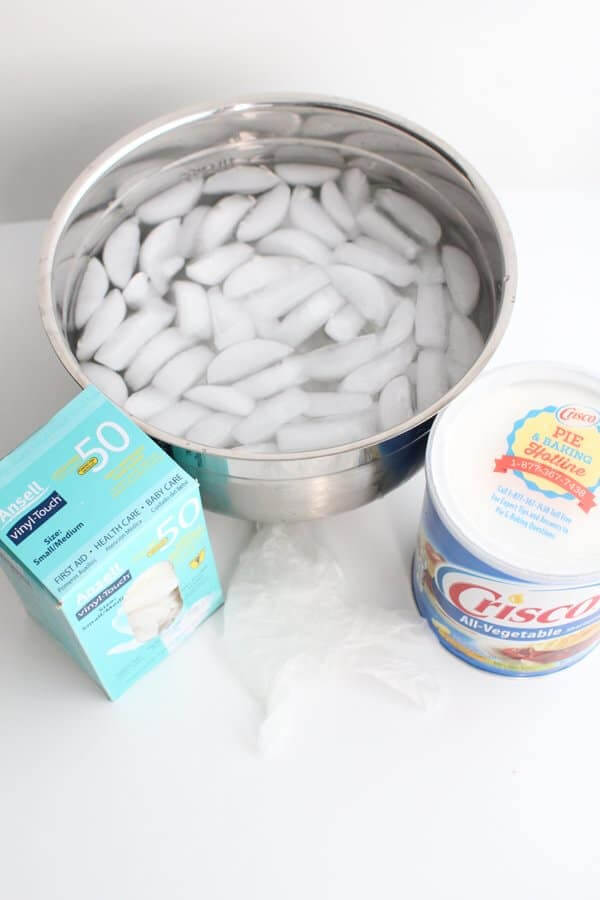
Image Source/Tutorial: I Can Teach My Child
This simple activity using an ice bowl, gloves, and Crisco easily demonstrates the science behind how Arctic animals stay warm inside the icy water. Polar bears have two thick layers of fur and black skin beneath to trap the heat when they come on the land. The thick fat present under their skin is called blubber. The layer of gloves along with Crisco will help them understand how blubber shields the animals from the icy water.
Fire Work In A Jar Science Project For 2nd Grade

Image Source/Tutorial: I Can Teach My Child
This activity involves oil, water, and some food colors. It is a science activity based on the densities of the liquids. First food color drops are added to the oil. It doesn’t mix with oil, instead, the food colors float in the oil. When this mixture is added to water. The food colors start mixing with water and all the colors start to blend depicting a tiny explosion of colors.
How to Make Magnetic Slime At Home: A Science Project For Kids

Image Source/Tutorial: Frugal Fun For Boys
Magnets are based on the scientific principle that like poles repel and unlike poles attract. Magnets have a special property in that they attract iron and objects made up of iron towards them. Magnetic slimes contain iron and so they attract magnets. They can even swallow up a magnet when a magnet is placed near it. Kids will greatly enjoy playing with and studying this magnetic slime and its properties.
Make A Lemon Volcano Science Project

Image Source/Tutorial: Babble Dabble Do
This is a volcanic eruption activity. It is completely safe for the children as it doesn’t involve any big eruptions. It depicts the vigorous reaction between the citrous acid present in lemons and the baking soda. Food colors can be added to make the frothy eruptions colorful and vibrant.
Homemade Playdough Recipe: A Science Project For Kids

Image Source/Tutorial: Living Well Mom
This is an easy and simple recipe for making playdough that is non-toxic and is cheaper than readymade clay dough. You just need some easily available kitchen ingredients to make this playdough. Use different colors to make this playdough secure it in a ziplock bag if you want to preserve it for a month or more.
I hope you like our list of “Kids Room Decor Ideas” for Kids and will surely try to make them.
If you like our ideas and want to read more crafts ideas, Keep visiting our website for the latest DIY ideas and other creative stuff for kids, parents, and teachers.
Please let us know in the comment section which “Kids Room Decor Idea” you like the most.
Thank you and have a nice day!
Follow us on Youtube for art and craft tutorials and much more.
More Articles from Kids Art & Craft
- 24 Beautiful Stained Glass Art Projects for Kids
- Easy Paper Craft Projects to Make in School
- Edible Science Experiments for Kids
- Easy Border Designs for Project File Pages
- Scientific Crafts for Toddlers Using Straws – Cool Science Projects







